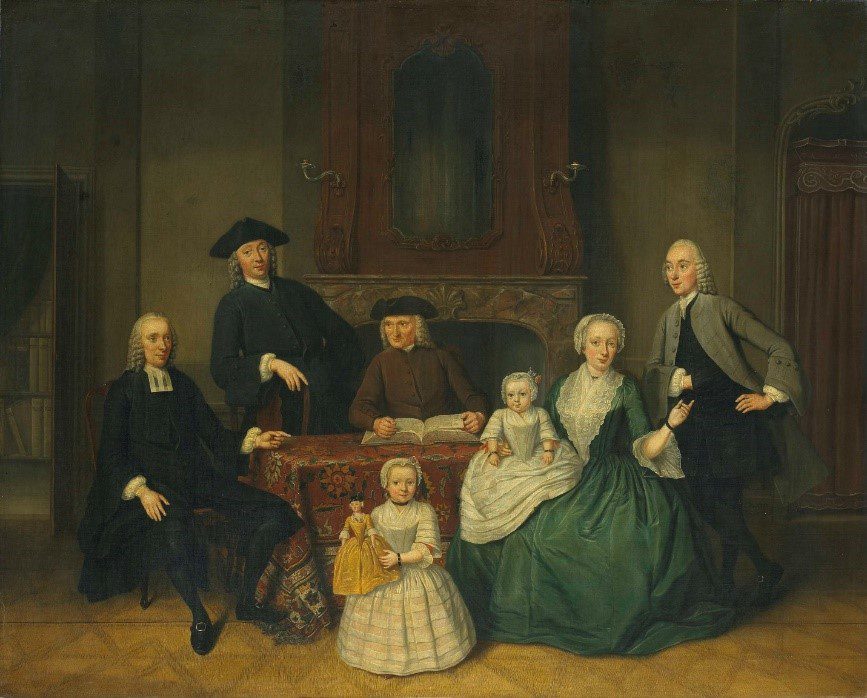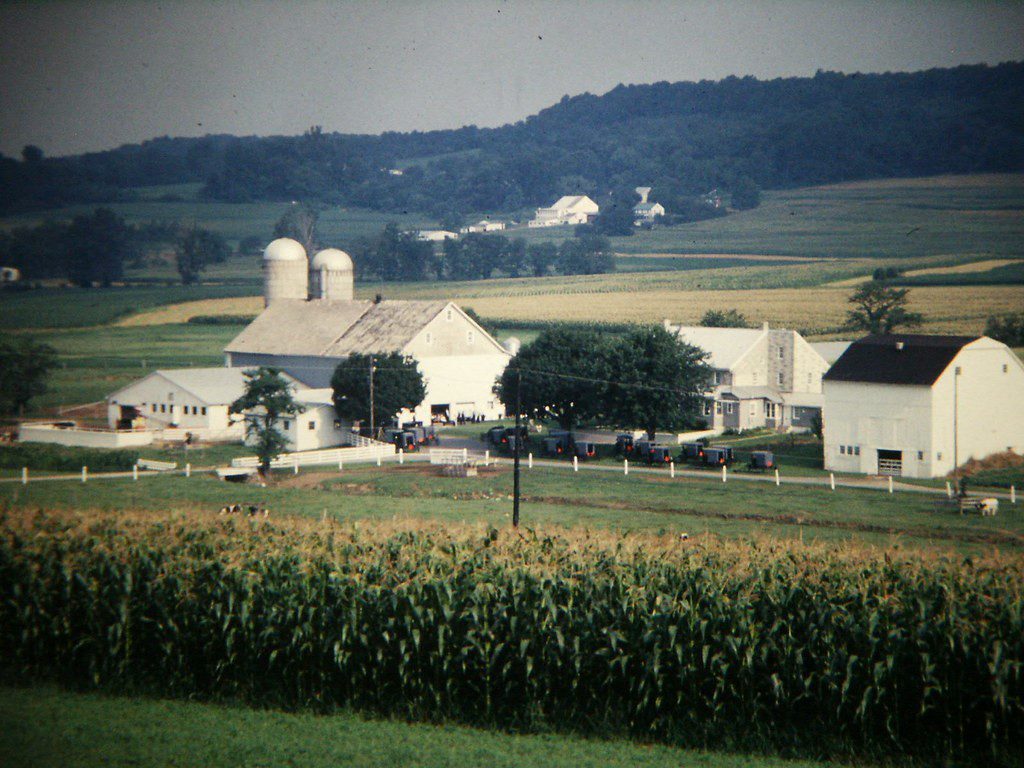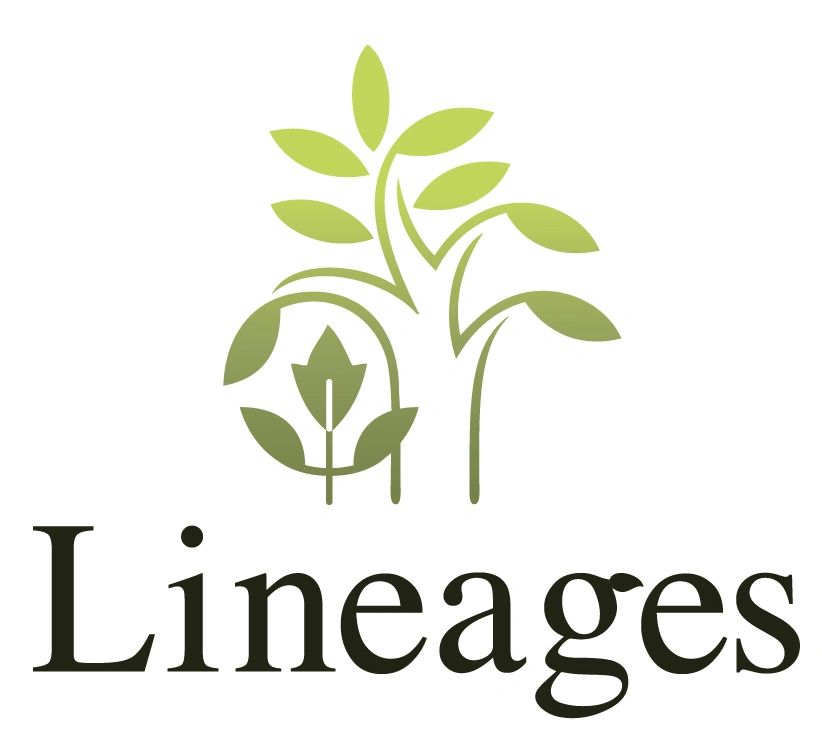German Americans

Even though the U.S. began as British colonies, it attracted immigrants from other European countries, including Germany. About one-fifth of Americans today can claim German Roots. Up until the early twentieth century, German Americans maintained their language and culture. This affected the lives of our German-American ancestors and where their records were kept. This blog focuses on the history and culture of German Americans.
Religion
William Penn made Pennsylvania a place of religious freedom, which attracted many Germans. He even went to Germany to recruit emigrants. Mennonites were the first to accept Penn’s offer. Many of these early settlers were religious people. Most German immigrants were protestant and included the following religions: Lutheran (Evangelical Lutheran Church in America), Reformed (United Church of Christ), Moravians, German Baptists (Church of the Brethren or Dunkers); and anabaptists such as Amish, Mennonites, Schwenkfelders, and other smaller sectarian groups. Very few early German immigrants were Catholic.
Early Dutch settlers held the first Lutheran church in Pennsylvania, but enough Germans came in that they began keeping records in German. German Baptists migrated from Germany between 1719 and 1729 and then settled in Lancaster, Berks, and Montgomery Counties in Pennsylvania. Fifty Schwenkfelder families came in 1754 and settled in Bucks, Berks, and Lehigh Counties in Pennsylvania. They are known for keeping good records. Most Pennsylvania Dutch farmers were Mennonites.
Note that some of the churches mentioned earlier have multiple names. It is important to learn about the history of your ancestor’s church and to pay attention to alternate names. When looking for church records of your ancestors, you may find records for the same church under various names.
Church records can be helpful in German-American research. German Americans went to church together, having German church services, being served by German pastors, and having their records recorded in German. This practice meant that sometimes a church record lists an immigrant ancestor’s town of origin.
There were few German pastors, so one pastor would serve multiple congregations. This meant that communion was only held twice a year. This shortage of pastors lasted into the nineteenth and twentieth centuries.
Anna Mary Long Davidson went to church a little away from where she lived. On the Bethany United Church of Christ communion roll for Ephrata, Lancaster, Pennsylvania, she appeared as Anna Long on 25 October 1868 and as Anna Mary Davidson on 25 April 1869[1]. Knowing that she married James Davidson and they had a child in 1869, it can be surmised that she married him between those two communions. This specific six-month window will be a helpful clue in looking for her marriage record.
Church membership of German Americans was fluid. Because of the scarcity of clergy, a family might baptize their children with whatever church sent the next clergyman. This means that records of any given family could be found in multiple churches. Some congregations shared church buildings with congregations of other faiths. These shared buildings were known as union churches. Sometimes, they kept a single book for all the churches. If Anna Mary Long’s and James Davidson’s marriage records are not found at Bethany United Church of Christ, I will need to search other churches in the area for them. Learning the history of your ancestor’s congregation can help you gain context of its charges and clergy.
Lutherans got along well with Reformed churches. Mennonites and Quakers got along well. These religions that got along were most likely to share church buildings. Sometimes, the records of one would be with the records of the other.
I have seen my own Garner line in multiple churches. One collection is Mennonite Vital Records, a collection of index cards that include non-Mennonite families. This is a secondary source that is more reliable as clues than as evidence.

My fourth-great-grandfather, Daniel Garner, married his first wife, Rebecca Good, on 16 November 1834 at Bethany United Church of Christ in Ephrata, Lancaster, Pennsylvania.[2] A copy of the original record was found on Ancestry. His son—my third-great-grandfather—Phares Garner, was baptized on 22 January 1865 in the Swamp Reformed Church in West Cocalico Township, Lancaster, Pennsylvania. [3] The index lists the parents as Danial and Mary Garner, and Daniel Garner is also listed as the sponsor. Unfortunately, this Ancestry record is index-only. I have yet to track down the original record. My fourth-great-grandmother, Mary Landis, is buried in Mount Zion United Methodist Cemetery in Akron, Lancaster, Pennsylvania.[4] Her gravestone image and cemetery information were found on Find-A-Grave. Contacting the church associated with that cemetery can lead me to more records of her.
I’ve started keeping a chart to track which churches I find records of my ancestors. This is especially helpful for the German lines. Without knowing the German-American tendencies to share church buildings and to baptize wherever there was a preacher available, finding my ancestors in multiple churches was confusing. Knowing this is normal for German-Americans, I can more effectively research my ancestors by learning the histories of the Bethany Church of Christ, the Swamp Reformed Church, and Mount Zion Methodist church.
Naming patterns
German families followed naming patterns where the first three sons were named after the paternal grandfather, maternal grandfather, and father, and the first three daughters were named after the paternal grandmother, maternal grandmother, and mother. These naming patterns were not consistent. Sometimes, fourth and subsequent sons or daughters were named after aunts and uncles; sometimes, they were named after great-grandparents and beyond.
Often, names were reused when a sibling died. In some German villages, surviving siblings had the same name. A name might have been commonly used due to a prominent community member frequently being a sponsor at children’s baptisms.
What may be less familiar to the modern American is the Germans’ use of forenames and call names (rufname). The Germans went by their rufnames—their middle names. This practice lasted from the 1600s to the 1800s. Boys had forenames of Johann or Hans, and girls had forenames of Anna or Maria. The full name (forename and rufname) would be written on the baptism record, and the rufname was used on all official documents of the person throughout their life. If two people with similar names were in the same town, the full name might have been used to differentiate them. The forename was usually consistent within a family. If Johann, Anna, or Maria were the only given name, that was the true name.
This practice can cause confusion on records, especially with mis-indexing or in translations. Johann Peter may have gone by Peter, but some of his records may have been indexed as John P. Additionally, some translated records translate both Johann and Hans as John.
In the mid- to late-nineteenth century in America, the dual name practice was changed. Forenames were dropped, rufnames were used as first names, and the mother’s maiden name was used as the middle name. Some children were baptized with their mother’s maiden name as their middle name, while others adopted the new name later in life.

The German approach to nicknames was dropping the first syllable rather than the last one. Hans is short for Johann. Stine is short for Christine. Klaus is short for Niklaus. Mannes is short for Hermannus. Trin was short for Katharina. Polly is short for Anna Maria, and Molly is short for Magdelena. Germans used their nicknames in official records. This nickname practice means the nickname has a different first letter than the full name, which means a Soundex search for the full name won’t catch the nicknames. A separate search may need to be conducted for likely nicknames and their alternate spellings.
German surnames were adopted in the fourteenth to sixteenth centuries. Occupational surnames usually end in -er, mann, macher, or hauer. Geographic surnames can either be general or specific. They came about after an immigrant moved from an area. This can include surnames ending in -burg, -burger, -berg, -berger. -burg means a castle or administrative complex, and -berg means mountain. There are also characteristic surnames, such as Lang, Kopf, Weiss, Braun, Altmann, Gross, Kurtz, and Teufel. Patronymic surnames were popular in Schlewswig-Holstein and Ostfriesland until the mid-1800s. These were much like the Scandinavian-style patronymics, which were based on the father’s given name. Other parts of Germany had fixed patronymic surnames such as Martin, Friedrichs, or Jakobsohn. Some parts of Germany did Hofnames, a surname taken from the farm owner. This changed when ownership of the farm changed.
There are also German pronunciations which differ from those of English. It is helpful to keep track of which letters are likely to be confused with each other and interchange those letters in searches. For example, T and D; B and P; C and G; and K, V and P. The two dots above vowels change the vowel’s sound, similar to how silent E does in English. W is pronounced as V, and sometimes V was substituted on transcripts. The letter interchanges apply to both place names and people’s names.
One thing to note about name spelling is that if your ancestor was illiterate, their name was spelled the way others spelled it for them rather than how they spelled it. Your ancestor may not have had a concept of the correct spelling of their name.
Language
Pennsylvania Dutch or Pennsylvania German was the dialect of German spoken in America. While the spoken language evolved, the written language remained High German. The German-Americans continued speaking German until WWI. The Amish and Mennonites continued speaking German after WWI. Because of this practice, records in America were written in German, including German church records and newspapers.
Do you have German-American ancestors? Price Genealogy can help you sort through the culture and language practices of your ancestors to find their records.
Resources
- https://www.familysearch.org/rootstech/session/german-research-for-the-everyday-american
- https://familytreewebinars.com/webinar/the-voyages-of-our-german-immigrants/?search=german
- https://familytreewebinars.com/webinar/get-with-the-times-german-newspaper-research/?search=german
- https://familytreewebinars.com/webinar/the-palatine-immigrants-tracing-and-locating-18th-century-german-immigrants-online/?search=german
- https://familytreewebinars.com/webinar/searching-for-a-pennsylvania-german-ancestor/?sortby=newest&search=german
- https://familytreewebinars.com/webinar/is-this-the-end-taking-your-german-brick-walls-down-piece-by-piece/?sortby=newest&search=german
- https://familytreewebinars.com/webinar/german-names-and-naming-patterns/
- Buiter, A. S. (2020). Tracing Immigrants through the Port of New York: Early National Period to 1924. New York Genealogical and Biographical Society.
- Freilich, K. H. (2016). NGS Research in the States Series: Pennsylvania (B. V. Little, Ed.; 3rd ed.). National Genealogical Society.
- DeGrazia, L. M. (2013). NGS Research in the States Series: Research in New York City, Long Island, and Westchester County (B. V. Little, Ed.). National Genealogical Society.
- Shawker, P. O. (2008). NGS Research in the States Series: Maryland (K. Freilich & A. C. Fleming, Eds.). National Genealogical Society.
- Clint, F. (1976). Pennsylvania Area Key (2nd ed.). The Everton Publishers, Inc.
- All photos are public domain
- All images are public domain
[1] Bethany United Church of Christ (Ephrata, Lancaster, Pennsylvania), communicants, pg. 15, 25 Oct 1868, entry for Anna Long; 25 Apr 1869, entry for Anna Mary Davidson; digital image, Ancestry (https://ancestry.com : accessed 8 December 2023), database Pennsylvania and New Jersey, U.S., Church and Town Records, 1669-2013>PA-Lancaster>Ephrata>United Church of Christ>Bethany United Church of Christ, image 268.
[2] Bethany United Church of Christ (Ephrata, Lancaster, Pennsylvania, United States), “marriages, 1766-1860,” image 120, Daniel Garner and Rebecca Good, 16 November 1834; digital images, Ancestry (https://ancestry.com : accessed 11 December 2023).
[3] Swamp Reformed Church (West Cocalico Twp, Lancaster, PA), “Baptisms, 1729-1881”; database, Ancestry (https://www.ancestry.com/discoveryui-content/view/50054:7830 : accessed 11 December 2023), baptism entry for Phares Garner, 22 January 1865.
[4] Find a Grave, database with images (https://findagrave.com : accessed 11 December 2023), memorial 207368140, image of headstone for Mary Garner (1828-1895), Mount Zion United Methodist Cemetery, Akron, Lancaster, Pennsylvania. Photographed by Suzette.
